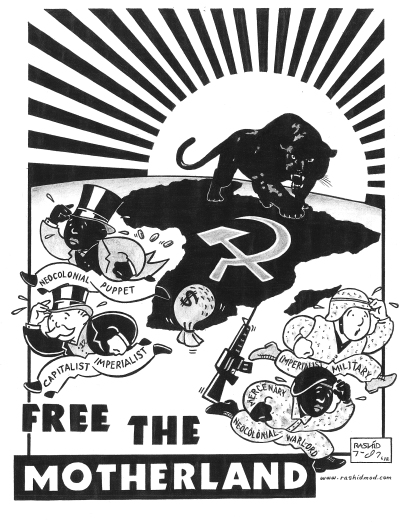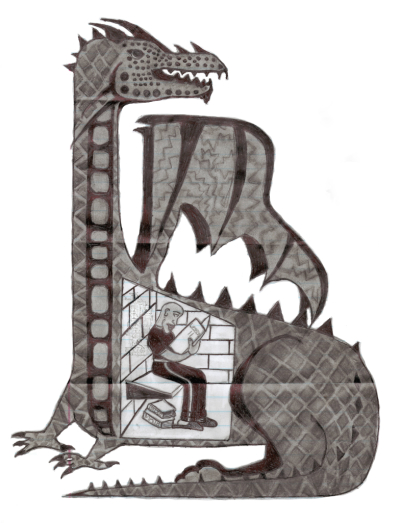
Imperialists Push Coup in Venezuela to Secure Oil for Amerikans
The United $tates is attempting a coup in Venezuela, pushing Juan Guaidó, formerly a lawmaker in the Venezuelan government, to declare emself President. This subversion of democracy is par for the course for the imperialist United $tates. The United $tates will do whatever it takes to maintain access to cheap labor and resources in Latin America. In this latest round of intervention, the United $tates has rallied other imperialist powers and U.$. lackey governments to join the charade in recognizing the illegitimate government of Guaidó.
As of this writing, the coup is failing and the national bourgeois government led by Nicolás Maduro remains in power in Venezuela. President Trump has threatened military intervention and we can anticipate further subversion of democracy and covert and overt imperialist attacks on Venezuela in the months to come.
The Bolivarian revolution in Venezuela
Venezuela was colonized by Europeans in 1522. The people won sovereignty in 1821 led by Simón Bolívar. After WWI oil was discovered in Venezuela, prompting an economic boom. But the collapse of oil prices in the 1980s devastated the Venezuelan economy. As the standard of living fell and the government implemented harsh economic reforms at the demand of the imperialist IMF, the people began to protest. In 1989 massive riots were met with violence by the government. This led to several coup attempts. While these coups failed, they indicated the ongoing unrest and instability in the country.
In 1998, Hugo Chavez was elected President with an overwhelming majority of the vote and a mandate for change. Formerly a military leader, Chavez had attempted a coup in the previous years of unrest. While not a communist by any stretch of the imagination, Chavez represented the national bourgeoisie in Venezuela. This class is a progressive ally of the anti-imperialist forces. Chavez launched a “Bolivarian revolution” which began with a 1999 Constituent Assembly to rewrite the Constitution of Venezuela. The people were mobilized to participate in this political process.
At the same time, Chavez implemented programs to help the vast majority of poor people in the country. By 2005 they had eliminated illiteracy. Between 1999 and 2012 infant mortality was cut from 19.1 to 10 per 1000, malnutrition was reduced from 21% to 3%, and poverty rates were more than halved. Venezuela also paid off all of its debts to the World Bank and IMF and then withdrew from these imperialist organizations which promote economic subservience in the Third World.
While implementing internal reforms, Chavez took up the anti-imperialist pole of leadership in Latin America, in alliance with Cuba. In 2011 ey helped launch the Community of Latin American and Caribbean States (CELAC), uniting 33 countries outside of imperialist control. In 2005, Venezuela launched a program to provide subsidized oil to 18 countries in Latin America and the Caribbean.
Chavez was re-elected to two more terms as President, but died from cancer in 2013 before serving his third term. Nicolás Maduro has been the president of Venezuela since Chavez’s death. As Vice President, Maduro was appointed to fill the role, and then won the popular election. Maduro again won a recent presidential election, but under the pretense that this election was not democratic, Juan Guaidó swore himself in as “interim President” in late January at the urging of the United $tates. Not even a participant in the election, Guaidó was previously the head of the national assembly, a body that was declared null and void in 2017.
Why does the U.$. care about Venezuela?
Venezuela is one of the world’s leading exporters of oil, and is a founding member of OPEC. When Hugo Chavez took power, Venezuela was the third biggest supplier of oil to the United $tates and the United $tates continues to be the biggest buyer of Venezuelan oil. Chavez’s government nationalized hundreds of private businesses and foreign-owned assets, such as oil projects run by ExxonMobil and ConocoPhillips.(1)
We can look to the recent history of Venezuela to understand just how ridiculous is the U.$. claim to supporting “democracy” in that country. The United $tates backed the viciously repressive dictatorship of Marco Jiménez (1948-1958) because of eir support of transnational corporations. This government imprisoned, tortured and murdered thousands of innocent Venezuelans. For this service the United $tates awarded Jiménez the military Legion of Merit “for exceptionally meritorious conduct in the performance of outstanding services and achievements.”(2)
Obviously the United $tates’ economic interests in Venezuela are significant. But there is also the geopolitical stability of imperialist control in Latin America more broadly. Cuba, Bolivia, Uruguay and Mexico are all refusing to follow the Amerikan imperialist lead in recognizing this coup. And the Venezuelan government has been a thorn in the side of the imperialists for years. Led by bourgeois nationalists, Venezuela is a solid anti-imperialist holdout in the region. The success of the Chavez government in retaining power and popular support is an embarrassment for the imperialists and an example for the oppressed in the region.
The U.$. government has been plotting coups and working to undermine the government in Venezuela since Chavez took power. Back in April 2002 the Bu$h government backed a short-lived military coup, but Chavez quickly returned to leadership. The United $tates has a long history of CIA-backed coups in Latin America. When direct overthrow of the government doesn’t work, the U.$. government resorts to election meddling, murder of political leaders, and other underhanded strategies. All this is done in the name of “democracy.”
The road forward for Venezuela
Venezuela is not a socialist country. Hugo Chavez brought to power a government representing the national bourgeoisie, not the proletariat. Progressive reforms were made under Chavez that serve the interests of the Venezuelan people as a whole in opposition to those of the imperialist United $tates. But Venezuela continues to operate within the capitalist model, despite rhetoric about “socialism.” Oil accounts for 98% of export earnings and 50% of GDP in Venezuela.(1) As production falls, the economy has nothing to fall back on. This problem is just one example of the failures of social democracy as a solution to the plight of the Third World proletariat.
During the Great Proletarian Cultural Revolution in China, the masses were mobilized around the question of putting the people’s interests first and not profits. This was the battle against the capitalist road. Venezuela has yet to part with this road. But it continues down the road of national sovereignty, refusing to be a neo-colony of the United $tates. As such, the national bourgeois government in Venezuela is on the side of the proletariat, while lacking solutions to all of its problems. We must stand firmly in support of the Bolivarian government in Venezuela as it remains a balwark against imperialist intervention and subversion.










